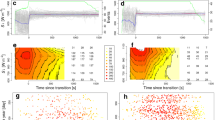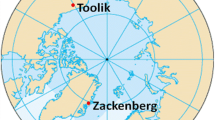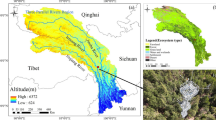Summary
¶The long-term variations of upward terrestrial (E) and downward atmospheric (A) long-wave radiation fluxes above a pine stand in the southern part of the upper Rhine valley plain are analysed based on monthly mean values from 27 years of monitoring.
Equivalent blackbody temperatures of the canopy and the atmosphere are calculated and compared to air temperatures at nearby sites.
Based on 324 monthly values each, correlations between A and E as well as A and global radiation G are analysed. Only the former are highly correlated. Monthly mean values of long-wave radiation A can be calculated from air temperature, water vapour pressure and cloud cover.
The long-term yearly average of equivalent blackbody temperature of the canopy is 0.6 K lower than kinetic air temperature at nearby sites.
Only small, insignificant increases of both blackbody temperatures and air temperature are found. Despite the strong forest growth, it is surprising that the ratio of canopy emission temperature to air temperature did not change significantly.
Relationships between the changes of general atmospheric circulation and equivalent blackbody temperatures of the canopy point to a strong dependence on shifts of general atmospheric flow.
Similar content being viewed by others
Author information
Authors and Affiliations
Additional information
Received February 24, 2000; revised April 18, 2002; accepted July 20, 2002
Rights and permissions
About this article
Cite this article
Kessler, A., Jaeger, L. Analysis of long time series of long-wave radiation fluxes above a pine forest. Theor. Appl. Climatol. 74, 179–189 (2003). https://doi.org/10.1007/s00704-002-0702-8
Issue Date:
DOI: https://doi.org/10.1007/s00704-002-0702-8




